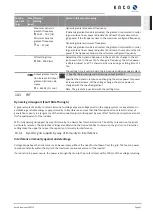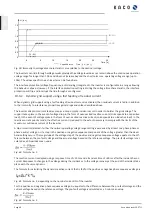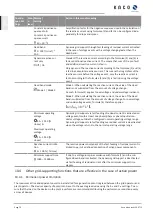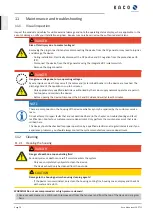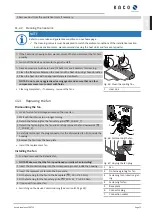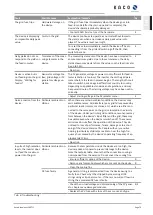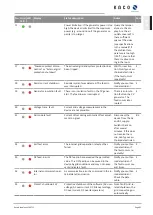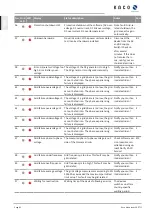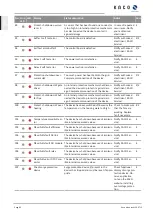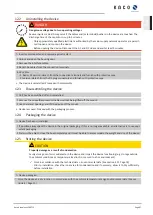
Fault
Possible cause
Explanation/remedy
By
The grid fuse trips.
Hardware damage on
the device.
If the grid fuse trips immediately when the device goes into
feed-in mode (after the start-up period is complete), the
device’s hardware is probably damaged.
› Contact KACO Service to test the hardware.
E
The device is displaying
an impossible daily peak
value.
Faults in the grid.
The device continues to operate as normal without losses to
the yield, even when an erroneous daily peak value is dis-
played. The value is reset overnight.
To reset the value immediately, switch the device off by dis-
connecting it from the grid and switching off the DC, then
switch it back on.
E
Daily yields do not cor-
respond to the yields on
the feed-in meter.
Tolerances of the meas-
uring elements in the
device.
The measuring elements of the device have been selected to
ensure maximum yields. Due to these tolerances, the daily
yields shown may deviate from the values on the feed-in meter
by up to 15%.
E
› No action.
Device is active but is
not feeding into the grid.
Display: "Waiting for
feed-in"
Generator voltage too
low; grid voltage or PV
generator voltage un-
stable.
The PV generator voltage or power is not sufficient for feed-in
(solar radiation is too low). The inverter checks the grid para-
meters before the feed-in process begins. The length of time it
takes to switch back on again differs from country to country,
depending on applicable standards and regulations, and may
be several minutes. The starting voltage may have been set in-
correctly.
› Adjust starting voltage in the Parameter menu.
E
Noise emission from the
device.
Particular ambient con-
ditions.
When there are certain ambient conditions, the devices may
emit audible noises. Grid interference or grid failure caused by
particular loads (motors, machines, etc.) which are either con-
nected to the same point on the grid or located in the vicinity
of the device. Under particular grid conditions, resonances may
form between the device’s input filter and the grid; these may
be audible even when the device is switched off. These noise
emissions do not affect the operation of the device. They do
not lead to loss of performance, failure, damage or to a short-
ening of the device’s service life. People with very sensitive
hearing (particularly children) are able to hear the high-fre-
quency hum caused by the device’s operating frequency of ap-
proximately 17 kHz.
› No action
In spite of high radiation
levels, the inverter does
not feed the maximum
power into the grid.
Particular ambient con-
ditions.
Because the temperatures inside the device are too high, the
device reduces its power to prevent damage to the device.
Note the technical data. Ensure that the convection cooling is
not impeded from the exterior. Do not cover the cooling fins.
› Ensure sufficient cooling of the device.
B
› Remove any foreign bodies which are present on the device. B
› Clean the cooling fins
E
DC fuse faulty
A generator string is disconnected from the device owing to a
faulty fuse. Check why it has tripped by measuring all DC
strings using a clip-on ammeter. - If there is no current flow in a
string, the associated DC fuse is faulty.
› Check the no-load voltage and dimensioning of the PV gener-
ator. Replace any damaged modules.
B, E
› Replace the PV fuse with a fuse of the same size and type.
Tab. 6:
Troubleshooting
Kaco blueplanet 29.0TL3
Page 79
EN



